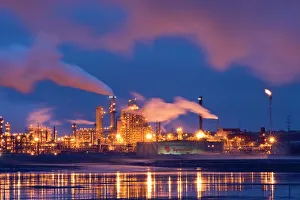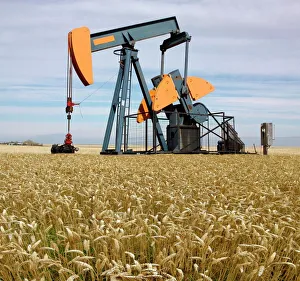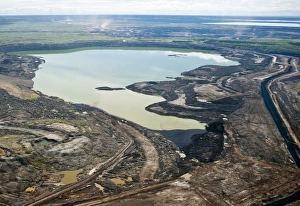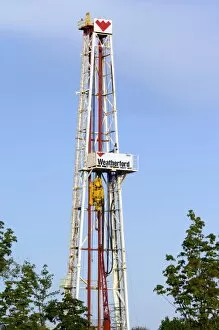Nonrenewable Collection
"Nonrenewable: Illuminating the Dark Side of Energy" A mesmerizing sight unfolds as an oil refinery at night paints the sky with its fiery glow
All Professionally Made to Order for Quick Shipping
"Nonrenewable: Illuminating the Dark Side of Energy" A mesmerizing sight unfolds as an oil refinery at night paints the sky with its fiery glow, reminding us of our dependence on nonrenewable resources. Amidst a vast wheat field stands an oil pump, silently extracting black gold from deep within the Earth's crust - a stark contrast between nature's bounty and mankind's insatiable thirst for energy. Offshore, towering above restless waves, an oil rig symbolizes both progress and controversy; it fuels our modern world while challenging environmental sustainability. In Canada's rugged terrain, sulphur is meticulously extracted from crude oil - a process that highlights the complex web of industries intertwined with nonrenewable resources. The sprawling landscape of Canada's oil sands reveals a massive refinery where bitumen is transformed into valuable petroleum products - showcasing both economic prosperity and ecological concerns. Nestled in Athabasca Oil Sands lies an imposing processing plant that relentlessly converts raw materials into fuel, underscoring the immense scale at which we rely on nonrenewables to power our lives. Witnessing nature reclaiming what was once lost, settling ponds stand as testament to efforts made towards restoring balance after years of extraction in Alberta's Athabasca Oil Sands region. Unveiling scars left behind by human intervention, opencast mines mar the pristine beauty of Athabasca Oil Sands; they serve as reminders that every barrel extracted comes at a cost to our environment. Reflecting upon their purpose amidst industrial landscapes, settling ponds near oil plants hold remnants of production processes - silent witnesses to humanity’s reliance on finite resources. The colossal bucketwheel tirelessly excavates rich deposits from vast reserves in Alberta’s Oil Sands – illustrating how technology has enabled us to extract more efficiently but also highlighting the urgency for sustainable alternatives.



















